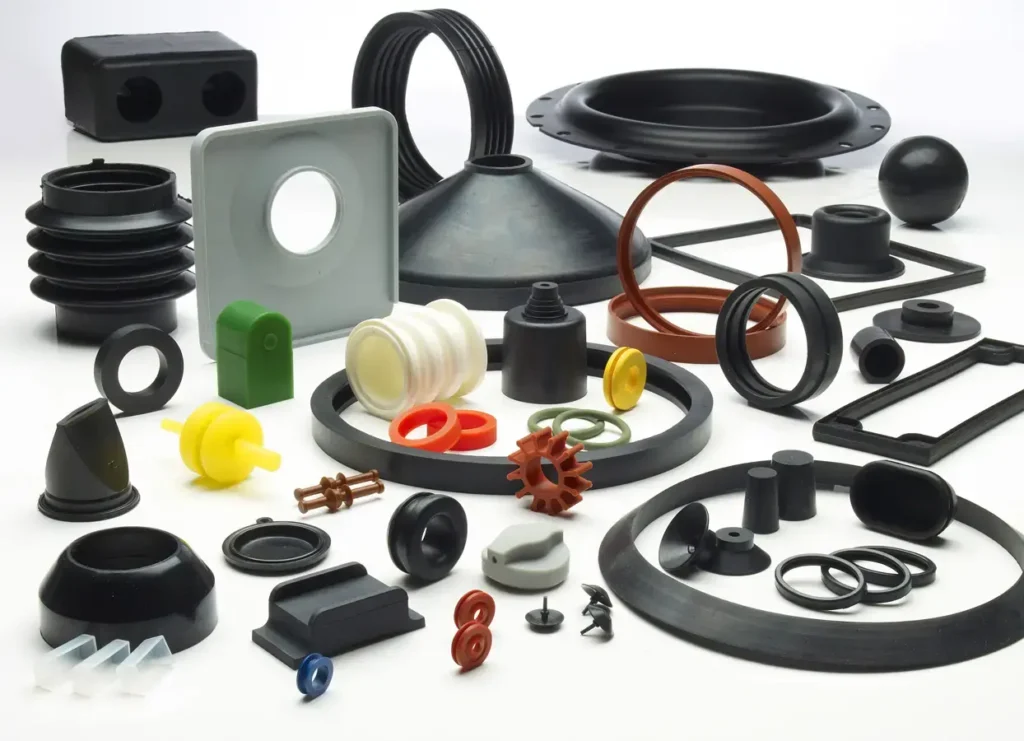In industries where reliability and precision are critical, component failure is not an option. From aerospace and automotive to medical and electronics, every part must meet exacting standards. Precision-molded rubber components offer tailored solutions that can withstand the specific stresses and demands of high-performance environments.
Built for Exact Specifications
Off-the-shelf rubber parts often fail to meet the performance requirements of complex applications. Custom rubber molding offers a solution by producing components that fit the exact size, shape, and function needed. This precision improves compatibility with other system parts, ensuring a secure fit and consistent performance.
Industries such as aerospace, automotive, and healthcare frequently face harsh operating conditions. Components must resist pressure, temperature shifts, vibration, and chemical exposure. Standard parts often don’t meet these challenges. Custom molding makes it possible to build rubber parts that are fully aligned with technical requirements, reducing risk and increasing reliability.
High Durability in Tough Conditions
The durability of molded rubber components is essential in critical settings. With the ability to choose the right compound for the job, each application benefits from a material tailored to its conditions. Silicone may be used for high-temperature stability, while nitrile offers excellent oil resistance.
This targeted selection extends product life and lowers maintenance costs. When components last longer, systems remain operational without frequent repairs or replacements. That kind of resilience is especially important in mission-critical sectors where downtime is expensive or even dangerous. The ability to engineer rubber parts for specific environmental and mechanical conditions helps reduce wear, seal failures, and part degradation.
Serving a Wide Range of Industries
Rubber manufacturing serves many industries. Each one has its own set of challenges, and components must be adapted to meet them. In the automotive industry, molded rubber is used in engine gaskets, seals, and vibration dampers. These parts must endure constant motion and exposure to heat and fluids. In medical device manufacturing, rubber components must meet strict sanitation standards and be compatible with human tissue or bodily fluids.
The electronics industry relies on molded parts to insulate, protect, and seal devices. From wearable tech to industrial control systems, these components help prevent moisture, dust, and contaminants from damaging internal parts. The broad range of industries benefiting from this process is a testament to its versatility and value.
Advanced Molding Techniques
Three primary molding methods are used in the production of custom rubber components:
- Compression Molding: This method is used to create simple yet durable parts. Rubber is placed into a mold and compressed with heat and pressure. It’s ideal for low- to medium-volume production.
- Injection Molding: Perfect for high-volume production runs, this process injects rubber into a mold cavity. It offers tight tolerances and detailed shapes, making it useful for small or intricate components.
- Transfer Molding: A hybrid method, transfer molding combines precision with the ability to use inserts. It’s often used when metal components need to be overmolded with rubber.
Each process allows for strict control over the shape, density, and surface quality of the final part.
Material Selection for Functional Needs
Selecting the right material is one of the most important steps in the molding process. The chosen compound determines how well the component will perform in real-world conditions and how long it will last without degradation. For example, EPDM rubber offers resistance to UV rays and ozone, making it ideal for outdoor applications. Fluoroelastomers (like Viton) handle exposure to fuels and chemicals. Neoprene is valued for its balance of flexibility and strength, making it suitable for dynamic and static applications across multiple sectors.
These compounds are chosen not just for environmental resistance, but also for how they interact with other materials, including plastics, metals, or biological tissue. Matching the material to the application improves function, safety, and overall product reliability.
Enhancing Components with Specialized Services
Beyond molding, specialized services can improve the quality and performance of rubber parts by enhancing durability, accuracy, and visual appeal during production.
- Rubber-to-Metal Bonding: This technique bonds rubber to a metal insert, producing parts that combine flexibility with structural support. It’s often used in mounts, grommets, bushings, and other vibration-resistant components in industrial systems.
- Cryogenic Deflashing: Precision parts may need finishing after molding. This method uses cold temperatures to remove excess rubber, or “flash,” from edges. It preserves the part’s geometry while achieving a smooth, uniform finish, especially for complex shapes and tight tolerances.
These services ensure that molded rubber parts meet high standards for cleanliness, performance, consistency, and appearance across a variety of critical applications.
Custom rubber molding plays a crucial role in high-performance applications where failure is not acceptable. It enables the creation of parts designed for durability, exact fit, and specific environmental resistance. Across sectors like aerospace, automotive, and healthcare, molded rubber parts help ensure safety, longevity, and efficiency in systems that must work flawlessly under pressure, even during continuous operation, harsh exposure, or mechanical stress. These tailored components support critical system functions, maintain performance under load, and reduce the likelihood of operational downtime or unexpected maintenance in demanding environments.
Also Read-Harnessing Technology for Efficient Home Management


